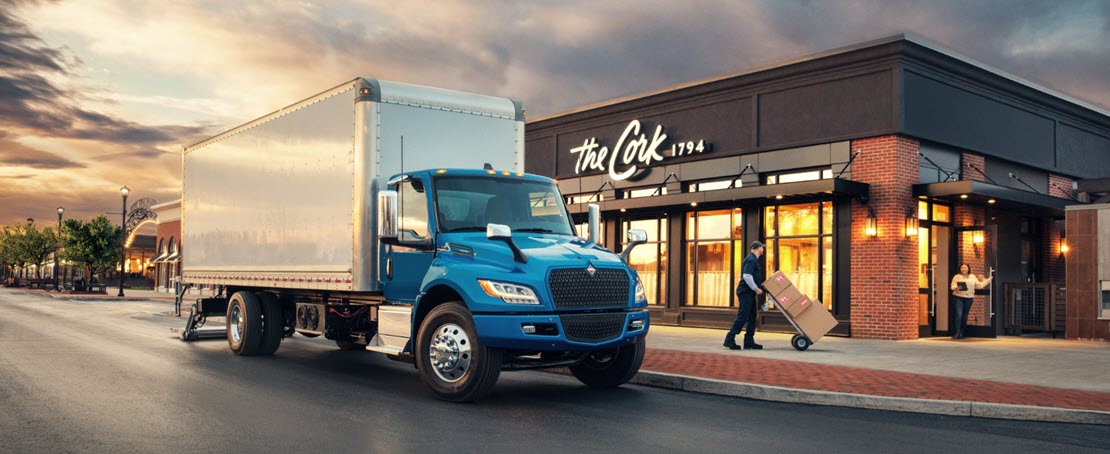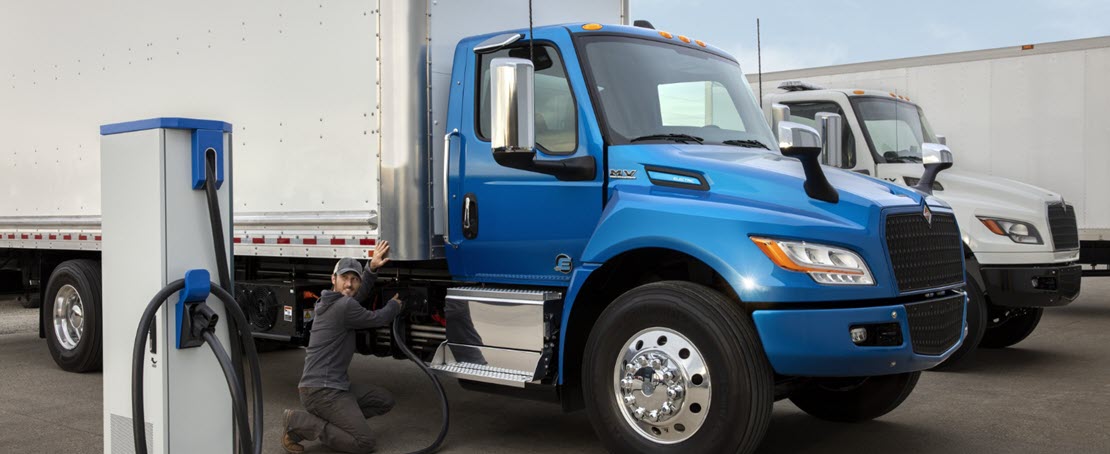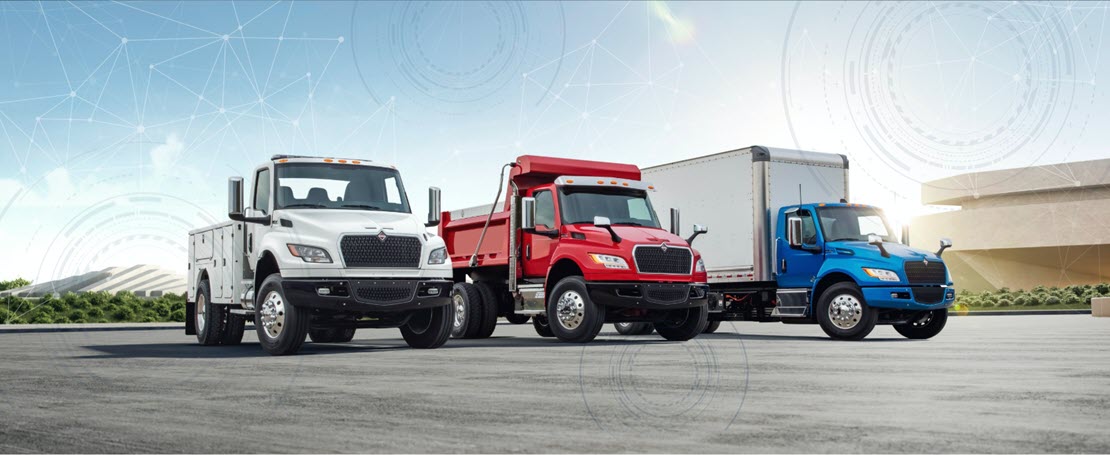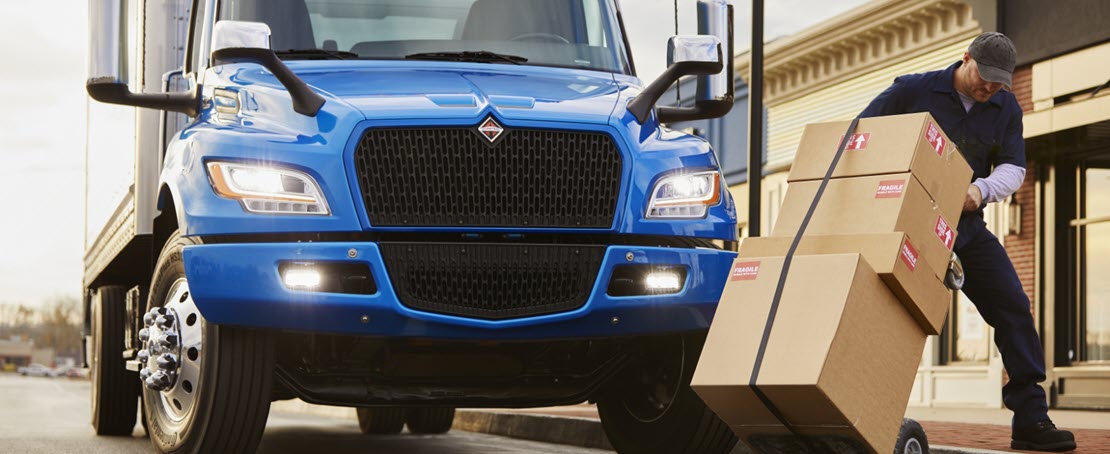TRUCK TRENDS TO WATCH IN 2023
The last year saw many things slowly get back to normal—or perhaps, our “new normal.” And while the trucking landscape is still vastly different than just a few short years ago, there are many positive trends to take away from 2022. Electric trucks, for example, went from concept to reality with several examples entering the market, including the medium-duty International® eMV™ Series. Other positive trends included the availability of advanced safety technology like collision mitigation and fleet telematics like OnCommand® Connection. Plus, customers were finally able to see these new products in person, thanks to the return of live trade shows. So, what can we expect in 2023? Let’s take a look.
RISING FUEL COSTS

Fuel costs will continue to have a massive impact on the trucking industry, as there is no evidence yet indicating fuel prices will drop dramatically in 2023. Trucking companies and fleets will have to continue to weigh the costs between paying more for fuel or investing in long-term solutions like electric, which can ultimately lead to lower maintenance costs. Whether you need consulting on infrastructure and grants or help finding the right charging solutions, having a partner like International Truck can help make the transition to electric as smooth as possible.
SUSTAINABILITY

Many states and municipalities have focused on lowering truck emissions in order to help meet their sustainability goals. Some have adopted California Air Resources Board (CARB) regulations. These strict emissions rules mean that businesses must map out their decarbonization plan to stay in compliance. For example, under the Advanced Clean Trucks Act in California, zero-emission truck/chassis sales would need to be 75% of Class 4–8 straight truck sales, and 40% of truck tractor sales by 2035. What does this mean? Large employers, including retailers, manufacturers, brokers and any fleet of over 50 trucks, will be required to report information about shipments and shuttle services. This information will help identify future strategies to ensure that fleets purchase available zero-emission trucks and place them in service where suitable to meet their needs. From a sales perspective, manufacturers who certify Class 2B–8 chassis or complete vehicles with combustion engines would be required to sell zero-emission trucks as an increasing percentage of their annual California sales from 2024 to 2035. While electrification can help with the decarbonization aspect, many of our customers are wondering if electric vehicles are a sustainable solution. The answer is a resounding yes when it comes to regional trucking right now, but rest assured that on-highway vehicle solutions are also being worked on. Building the electric and charging infrastructure is essential, and one that International Truck is committed to in 2023 and beyond.
TECHNOLOGY ADVANCEMENTS

Electric vehicles have been the main topic when it comes to evolving technology, but there are other advancements that we’re excited about for 2023 as well. Products like OnCommand Connection have only continued to get more robust as time goes on, giving companies actionable intel on a wide range of data points. This advanced remote diagnostics tool gives you critical insights that help drive greater uptime and reduce total cost of ownership.
DRIVER SHORTAGES

The scarcity of truck drivers has been a concerning trend over the last few years, and it’s one the industry must continue to solve for, if the demand for goods continues to rise. Trucking companies understand the desire of drivers to stay closer to home, which makes hiring longer-haul truckers more difficult. But thanks to better wages and benefits, more candidates have entered the field, improving the shortage for 2022. This trend is expected to continue in 2023, especially as recent candidates start graduating from commercial driving schools. Indeed, much of the shortage will depend on the overall economy. If demand for goods lowers, so will the demand for drivers. This, combined with better wages, might finally mean trucking companies have all the drivers they need in 2023. Time will tell.
SUPPLY CHAIN CONSTRAINTS

There are several factors that could significantly impact the availability of trucks and spare parts in 2023. First is the direction of the U.S. economy. As interest rates rise to fight inflation, economic growth is likely to slow or even shrink. This could affect everything from equipment orders to driver hiring. Either way, it is likely that supply chain constraints and material shortages will continue into 2023. These constraints have meant that truck manufacturers have not been able to meet normal replacement levels, leaving a significant backlog that will take some time to make up. As we have seen over the past two years, fleets may not receive all the trucks they would like and must operate their current vehicles a little longer than they normally would. Keeping these older trucks on the road requires a trusted partner that can provide the parts and service needed from an OEM to aftermarket perspective. International Truck has over 1,000 service locations between our dealer network, as well as Love’s and Speedco locations that are all ready to provide the parts and service you need to keep your business moving forward. To find a dealer location near you, please visit our dealer locator today:
To conclude, the best strategy for fleets in 2023 is to stay flexible. We may not know the direction the industry will take, but we do know that the more information fleets and businesses have, the better decisions they can make.





